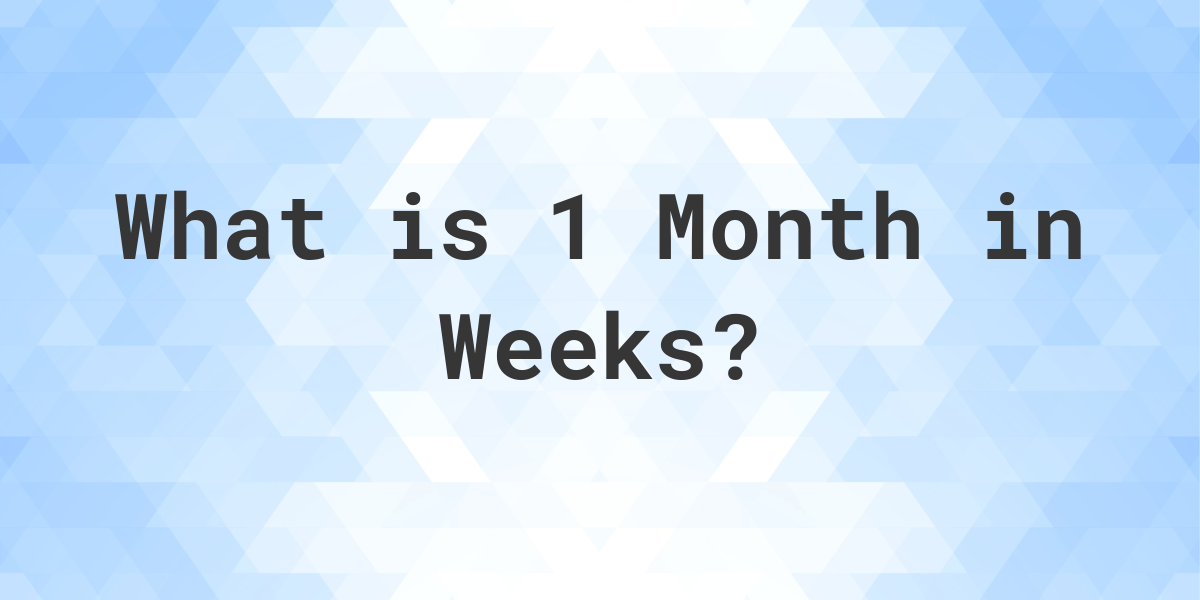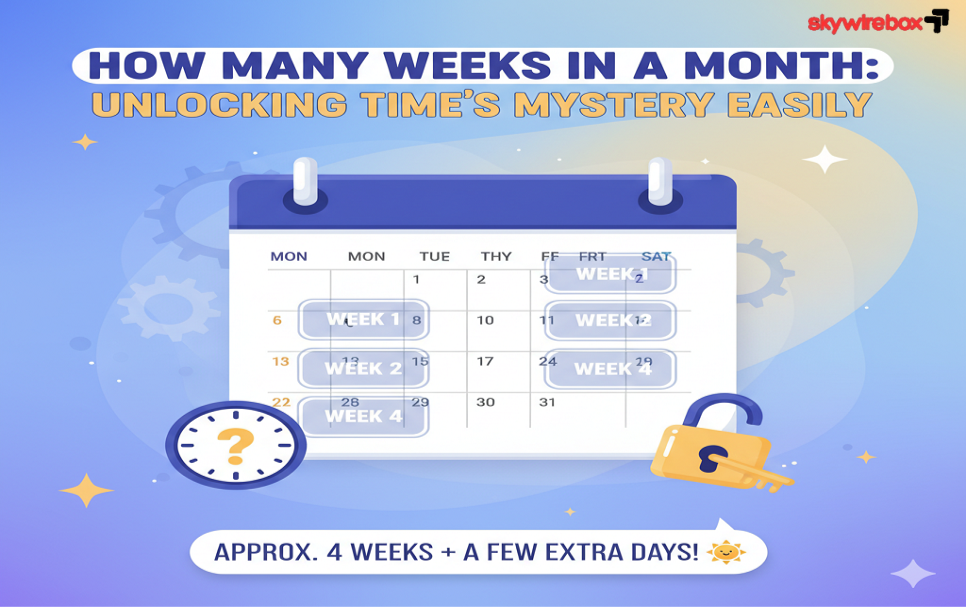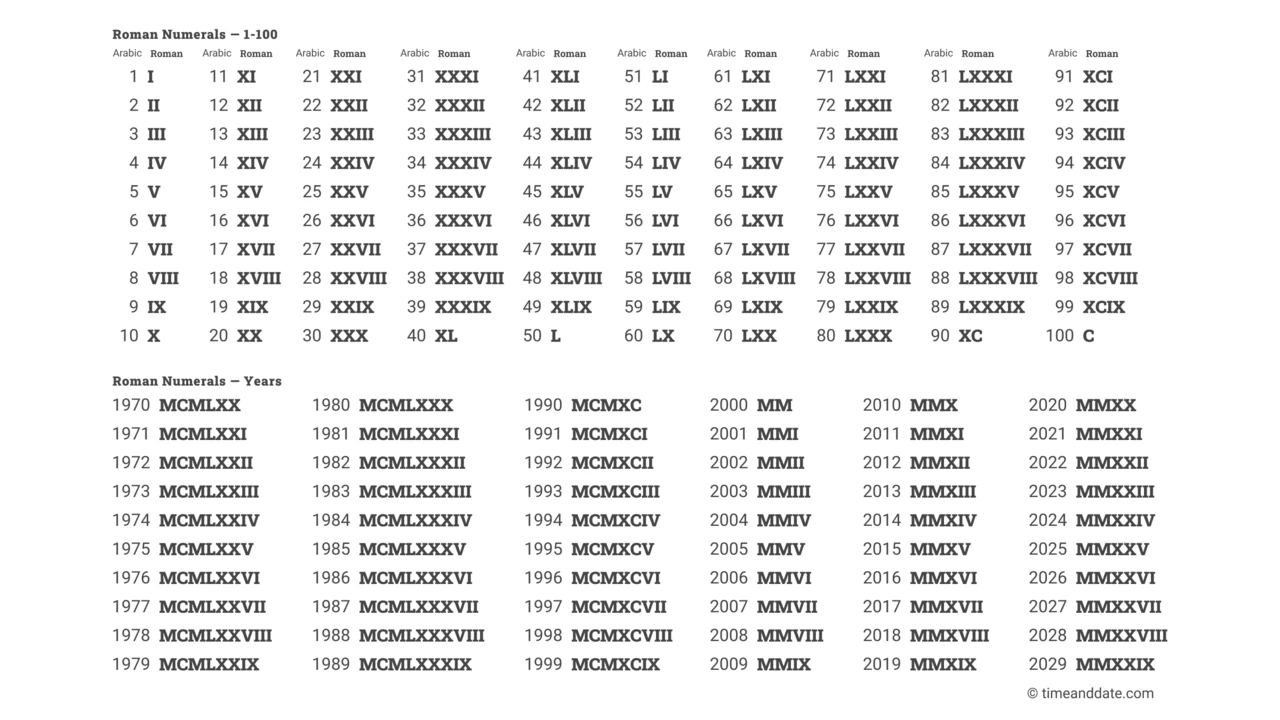Have you ever wondered exactly How Many Weeks in a Month? It might seem like a simple question, but the answer isn’t as straightforward as you think.
Understanding how weeks and months line up can help you manage your schedule better, plan your goals more effectively, and even track important events like pregnancy or project deadlines. You’ll discover the clear breakdown of weeks in each month, why the number can vary, and easy ways to calculate it anytime you need.
Keep reading to unlock this handy knowledge and take control of your time like never before!
Weeks In A Month Basics
A standard week has exactly 7 days. Most months have either 30 or 31 days, except February, which has 28 or 29 days.
Because months are not made up of a perfect number of weeks, the number of weeks in a month changes. Usually, a month has about 4 weeks and 2 or 3 extra days. This means weeks and months do not line up perfectly.
For example, a 31-day month equals 4 full weeks plus 3 days. A 30-day month equals 4 full weeks plus 2 days. February is shorter, with only 4 weeks or less.
| Month Length | Weeks | Extra Days |
|---|---|---|
| 31 days | 4 weeks | 3 days |
| 30 days | 4 weeks | 2 days |
| 28 days (Feb) | 4 weeks | 0 days |
| 29 days (Leap Feb) | 4 weeks | 1 day |
Calculating Average Weeks
The average number of weeks in a month is calculated by dividing the total days in a year by the number of weeks in a year, then by 12 months. The formula is:
Average weeks per month = 52 weeks ÷ 12 months ≈ 4.33 weeks
This means most months have about 4 full weeks and a few extra days.
| Month Length (days) | Weeks (days ÷ 7) | Full Weeks | Extra Days |
|---|---|---|---|
| 28 (February) | 4 | 4 | 0 |
| 30 (April, June, Sept, Nov) | 4.29 | 4 | 2 |
| 31 (Jan, Mar, May, Jul, Aug, Oct, Dec) | 4.43 | 4 | 3 |
Months vary in length, but weeks stay close to 4.33 on average.
Weeks In Specific Months
February usually has 28 days. This means it has exactly 4 weeks. In leap years, February has 29 days, which is 4 weeks and 1 day.
Months with 30 days include April, June, September, and November. These months have 4 full weeks plus 2 extra days. This means they have a little more than 4 weeks but less than 5 weeks.
Months with 31 days are January, March, May, July, August, October, and December. They have 4 full weeks and 3 extra days. These months last more than 4 weeks but less than 5 weeks in total.
Weeks In A Year Context
A year has 52 weeks in total. This number comes from 365 days divided by 7 days each week. Every four years, a leap year adds one more day, making 366 days.
The 12 months in a year fit into this calendar with varying lengths. Most months have either 30 or 31 days, except February, which has 28 days or 29 in leap years.
| Month | Days | Weeks (Approx.) |
|---|---|---|
| January | 31 | 4.4 |
| February | 28 / 29 | 4 / 4.1 |
| March | 31 | 4.4 |
| April | 30 | 4.3 |
| May | 31 | 4.4 |
| June | 30 | 4.3 |
| July | 31 | 4.4 |
| August | 31 | 4.4 |
| September | 30 | 4.3 |
| October | 31 | 4.4 |
| November | 30 | 4.3 |
| December | 31 | 4.4 |
Using Weeks In Real Life
Using weeks helps with clear planning in daily life. Many people find it easier to think in weeks than months. For example, work schedules often follow a weekly pattern. This helps to organize tasks and meetings. School timetables also use weeks to set classes and holidays.
In pregnancy, doctors count the baby’s growth in weeks. This gives a more exact timeline than months. Medical tests and check-ups are planned by weeks too. This helps track the baby’s health closely. Counting weeks also helps in calculating due dates accurately.

Tools For Conversion
Weeks to months calculators help convert time easily. Enter the number of weeks, and the tool shows the months equivalent. This saves time and avoids mistakes.
Manual conversion uses a simple rule: 1 month ≈ 4.33 weeks. Multiply weeks by 0.23 to get months roughly. For example, 8 weeks × 0.23 = about 1.84 months.
| Weeks | Approximate Months |
|---|---|
| 4 | 0.92 |
| 8 | 1.84 |
| 12 | 2.76 |
| 16 | 3.68 |
Remember, months vary in length. This method gives an approximate answer. For exact results, use a calculator tool.
Frequently Asked Questions
Are There 4 Weeks In A Month?
A month usually has about 4 weeks, but it often includes extra days beyond 28. Most months have 30 or 31 days. This means some months span slightly more than 4 full weeks.
Do Months Have 4 Or 5 Weeks?
Months typically have either 4 or 5 weeks, depending on the number of days. Most months span about 4. 3 weeks on average.
Is 4 Weeks Equal To 30 Days?
No, 4 weeks equal 28 days, not 30 days. Most months have 30 or 31 days, so 4 weeks are slightly less than a month.
Is There Always 5 Weeks In A Month?
No, months do not always have five weeks. Most months have about four full weeks. Some months span slightly over four weeks, but only a few include five full weeks depending on the calendar layout.
Conclusion
A month usually has about four How Many Weeks in a Month, but it can vary. Some months have a few extra days beyond four full weeks. Knowing this helps with planning and understanding calendars. Counting weeks in a month is simple once you remember this.
Keep in mind, months are not all the same length. This basic fact makes time easier to manage every day.
Our all update get to visit our website: skywirebox









